My trip to the Middle East in mid-2008 was memorable. I found Jerusalem in particular fascinating. It’s one of the oldest cities on earth & a city sacred to all three of the major Abrahamic religions of Judaism, Christianity and Islam. Needless to say the place is absorbing, with Jerusalem’s tiny walled Old City in particular chock full of sites of seminal religious importance. Of course the status of modern-day Jerusalem remains one of the core issues in the Israeli–Palestinian conflict – both the Israelis and Palestinians claim the city as their capital. I took a day trip from Jerusalem to Bethlehem in the Palestinian West Bank, the supposed, according to the New The Testament, birthplace of Jesus of Nazareth. Geographically speaking the distance between Jerusalem & Bethlehem isn’t far – only some 10 kilometres – but having to pass through the Israeli-built barrier separating the Palestinian West Bank from the western Israel side means the trip takes longer than it should.
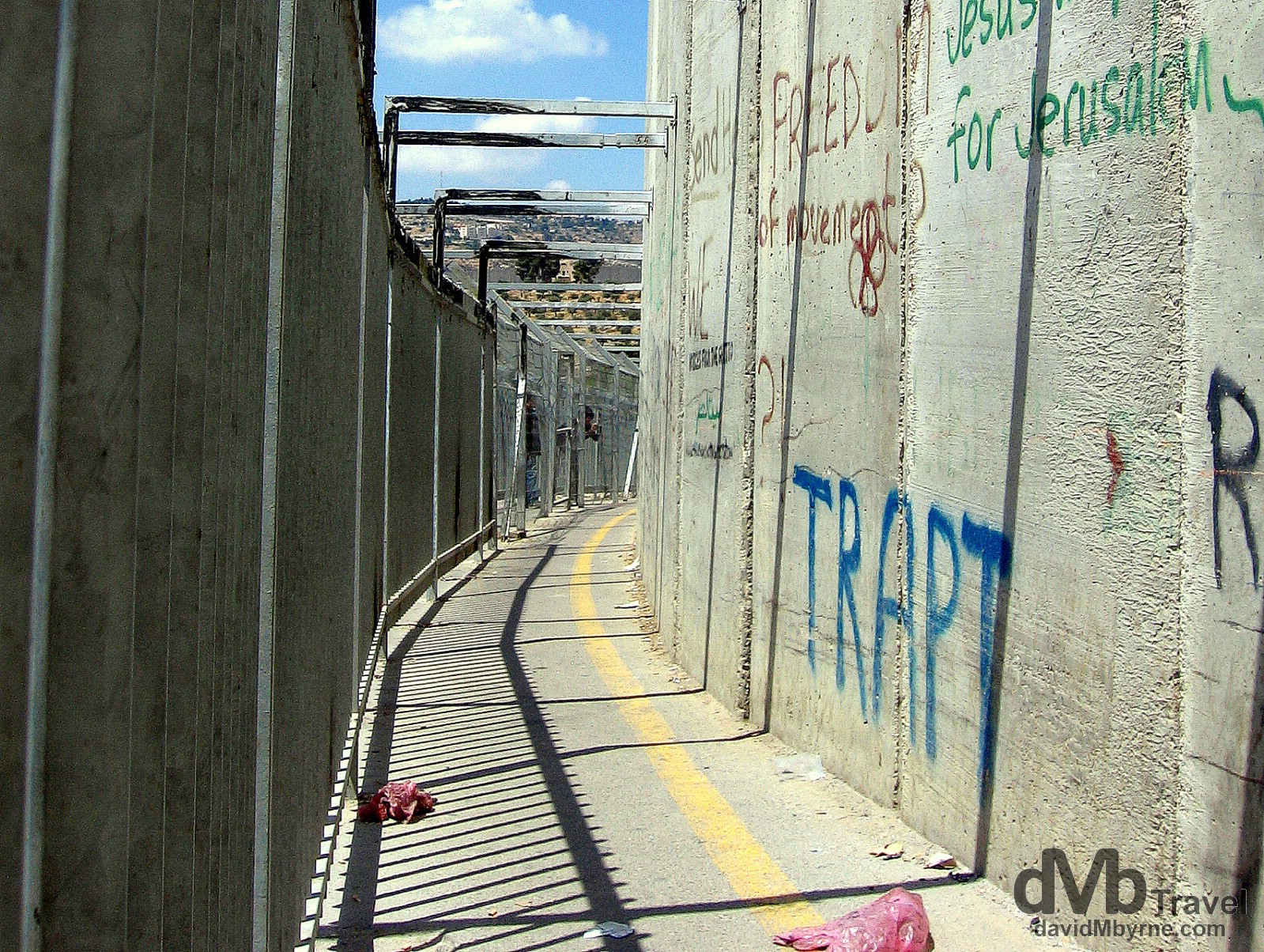
A section of the heavily fortified, heavily guarded barrier separating the Palestinian West Bank from Israel. Started in 1994 & still under construction today, the total length of the Israeli-built barrier when completed will be some 700 kilometres. A multi-layered fence system heavy on concrete & barbed wire, the wall ranges in height & depth but at no point is it pretty. Barrier supporters argue that it protects civilians from Palestinian terrorism – its construction did lead to a significant & undeniable drop in suicide bombing attacks on Israel – whereas barrier opponents claim it seeks to annex Palestinian land under the guise of security, undermines peace negotiations by unilaterally establishing new borders, & severely restricts the travel of nearby Palestinians to and from work both in the West Bank and in Israel. Few neutrals condone the wall with the International Court of Justice, in a 2004 advisory opinion, stating that the barrier was “contrary to international law.”
One isn’t supposed to linger at the barrier (or wall) but I couldn’t help but, struck as I was by some of the murals/art/graffiti adorning sections of the structure, mostly, it must be said, on the Palestinian side. I spent a while photographing the various works as presented here.
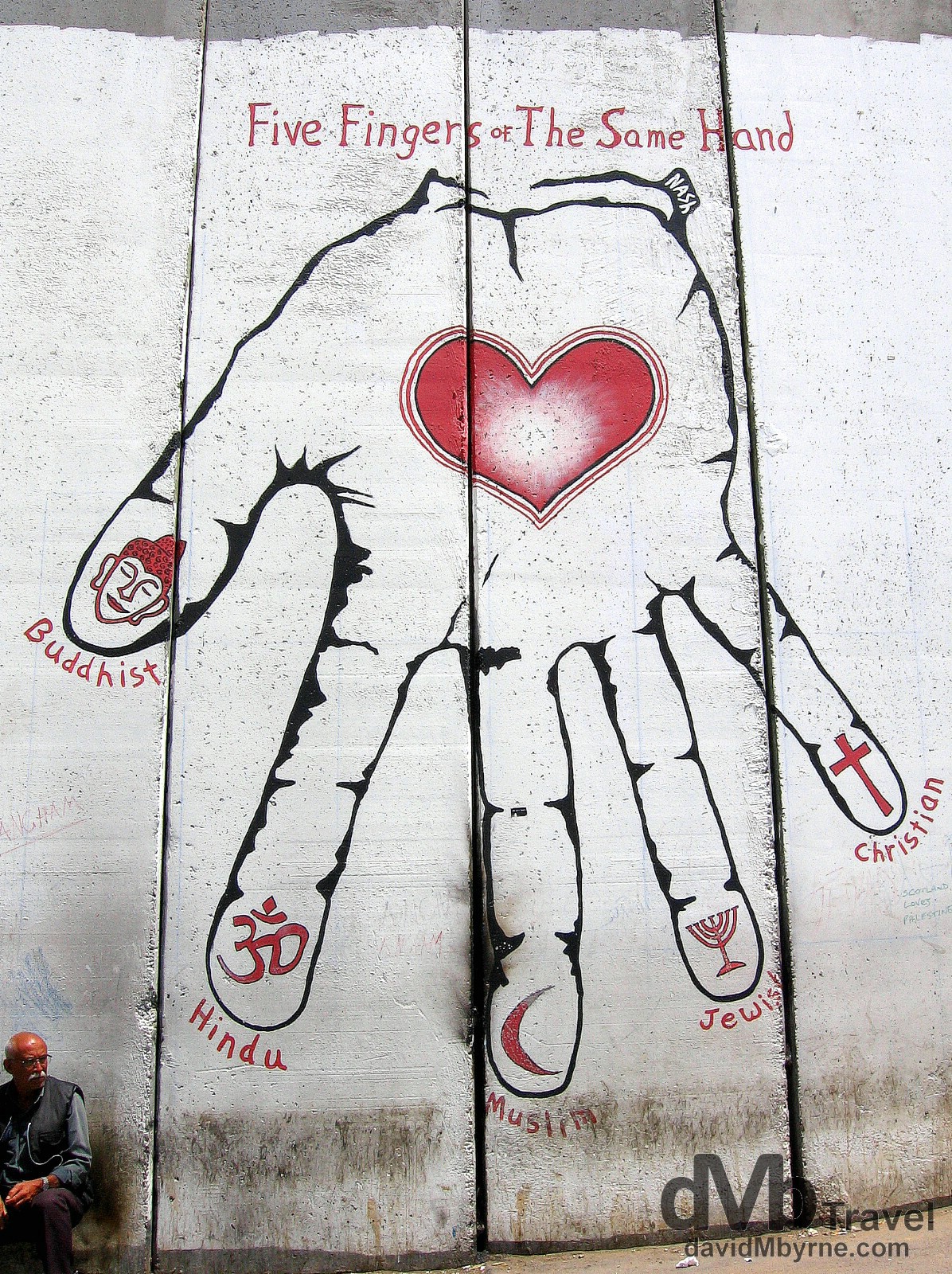
Five Fingers of The Same Hand. A man sitting by a large mural on the heavily guarded wall separating the Palestinian West Bank from Israel. May 2, 2008.
– Then U.S. Secretary of State Colin Powell commenting in 2003
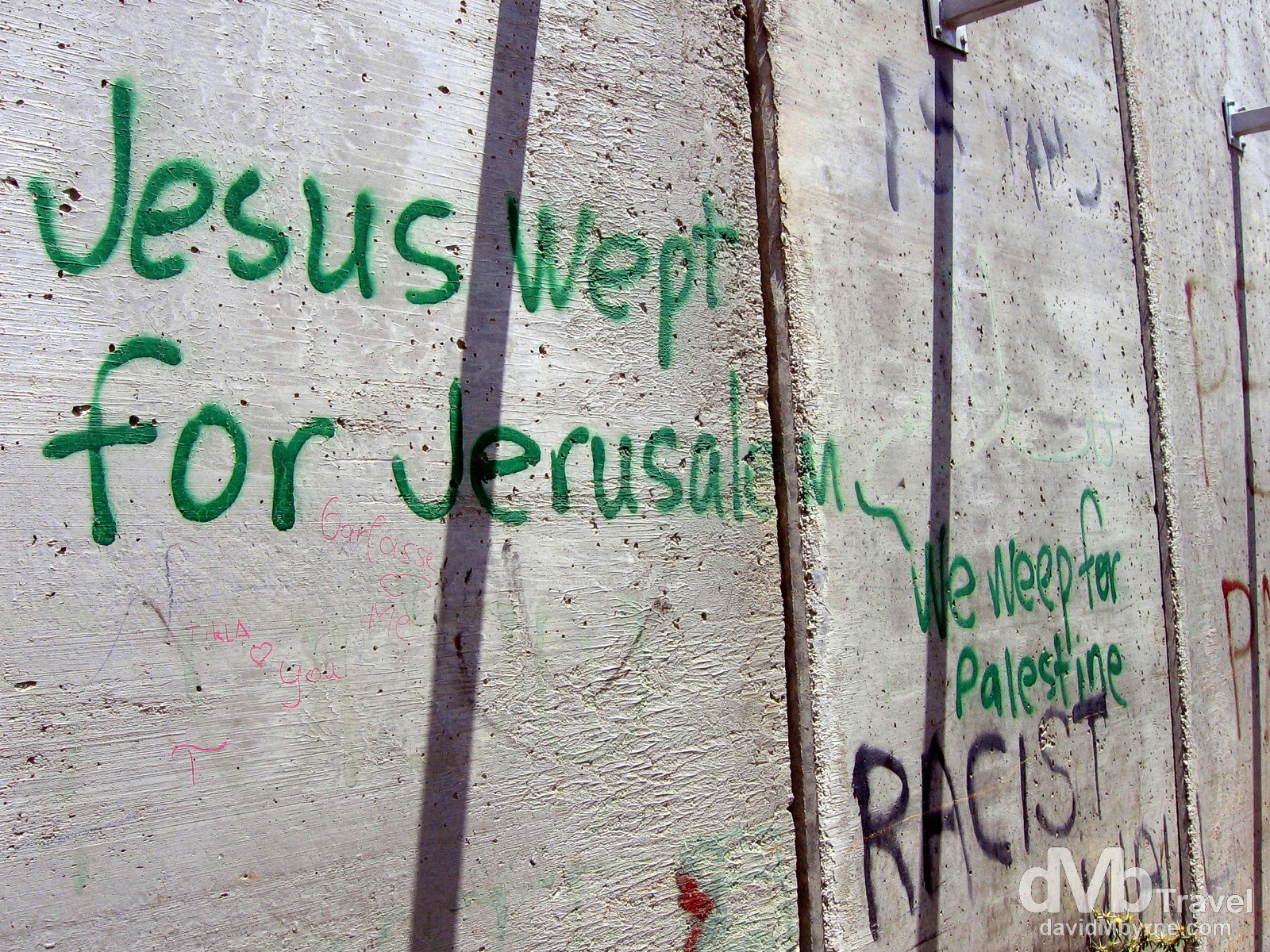
Jesus wept for Jerusalem. A section of the heavily guarded wall separating the Palestinian West Bank from Israel. May 2, 2008.
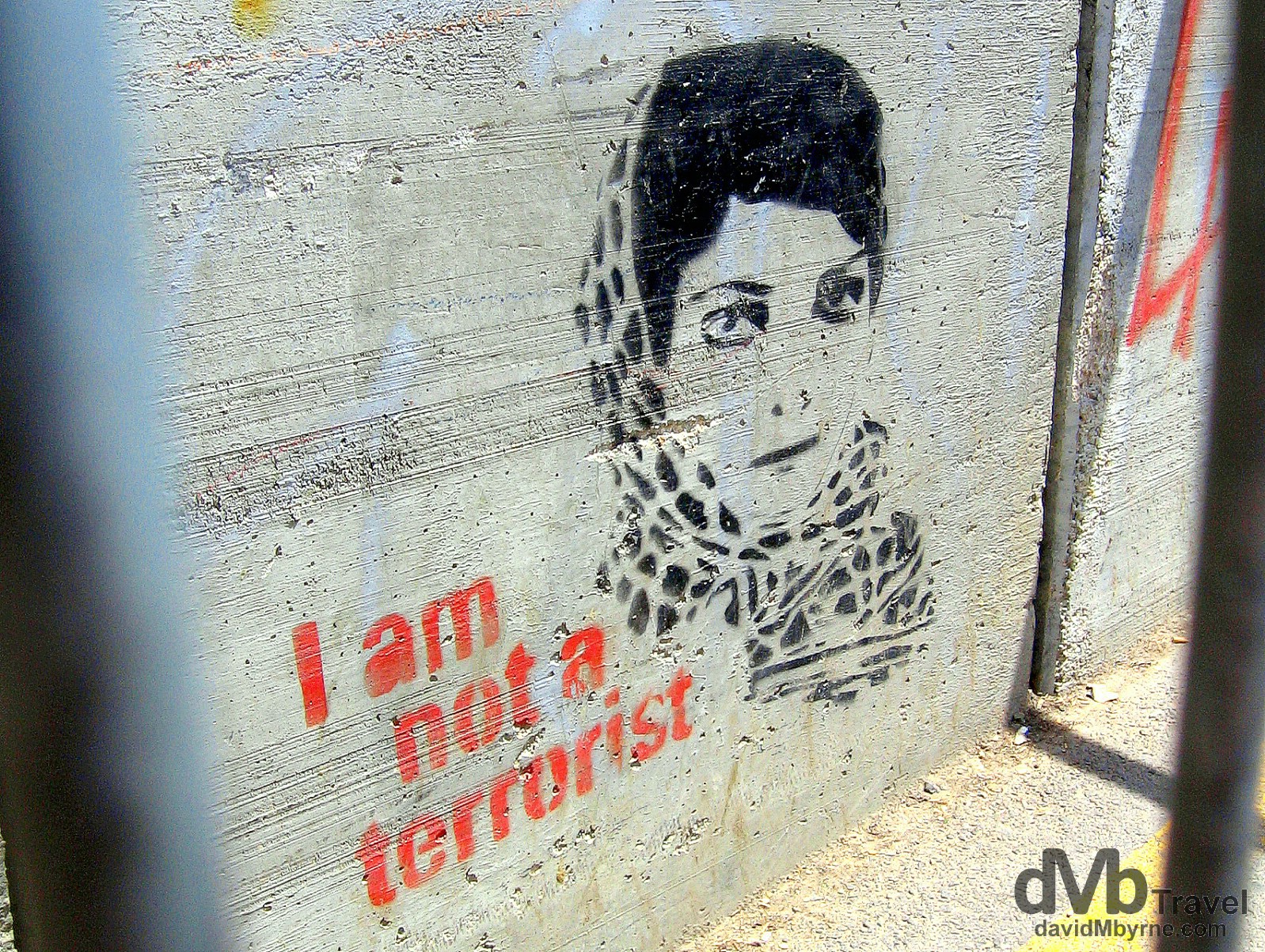
I am not a terrorist. Israeli officials predict that completion of the barrier will continue to prevent terrorist attacks since “an absolute halt in terrorist activities has been noticed in the West Bank areas where the fence has been constructed.” A section of the heavily guarded wall separating the Palestinian West Bank from Israel. May 2, 2008.
– Excerpt of a 2005 United Nations report
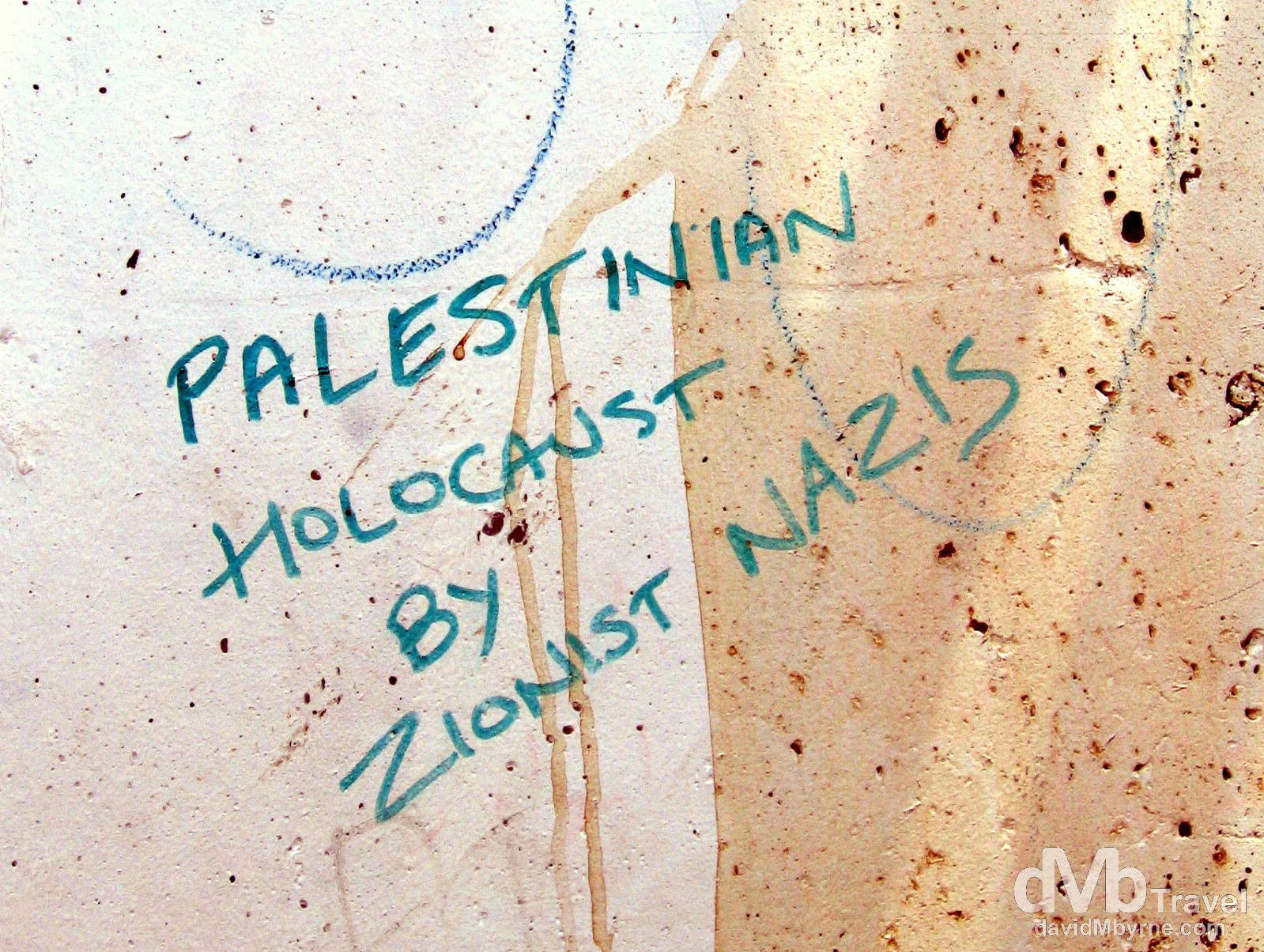
Palestinian Holocaust. A section of the heavily guarded wall separating the Palestinian West Bank from Israel. May 2, 2008.
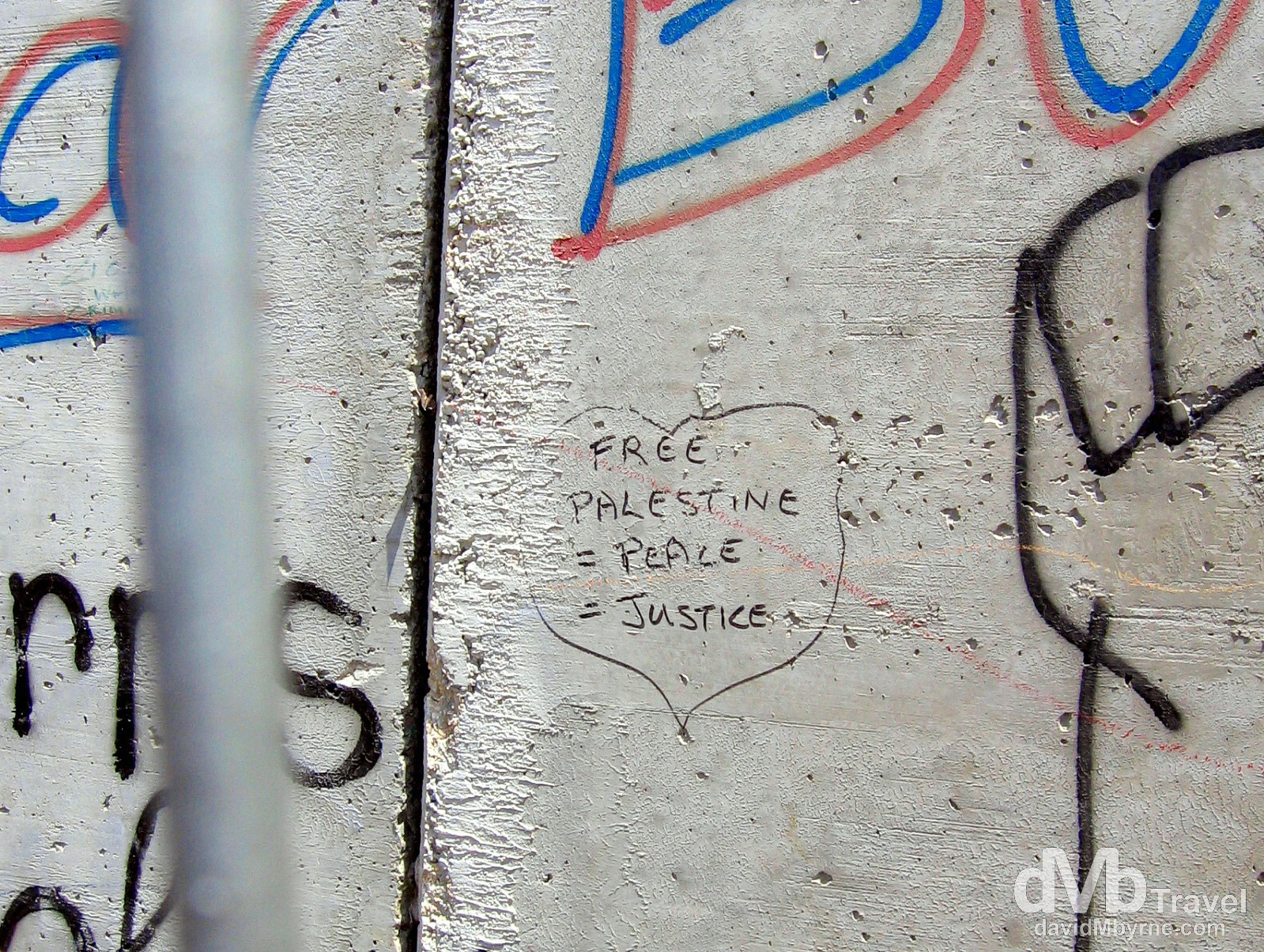
Free Palestine. A section of the heavily guarded wall separating the Palestinian West Bank from Israel. May 2, 2008.
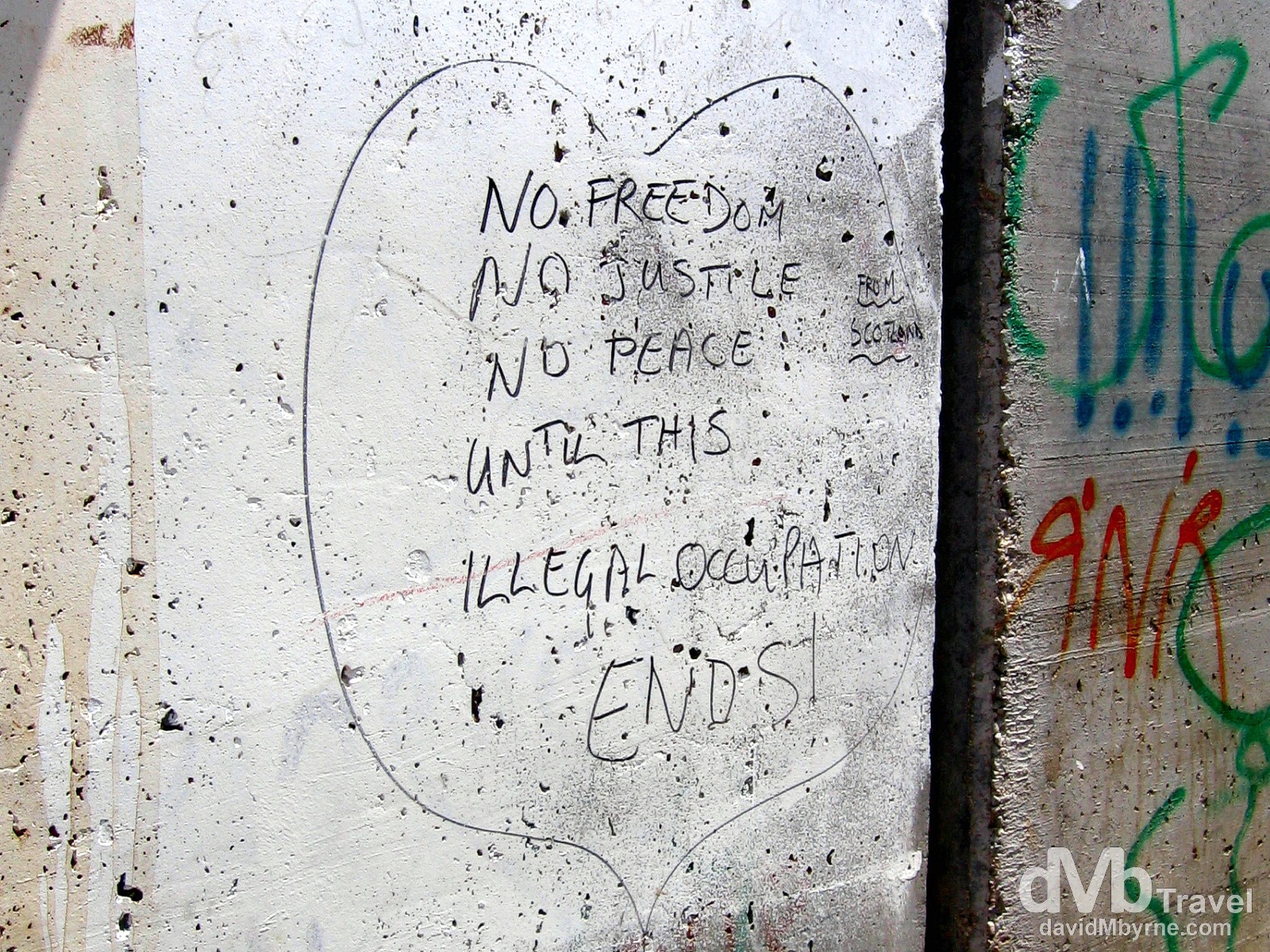
No Freedom. A section of the heavily guarded wall separating the Palestinian West Bank from Israel. May 2, 2008.
– Then U.S. President George W. Bush commenting in 2005
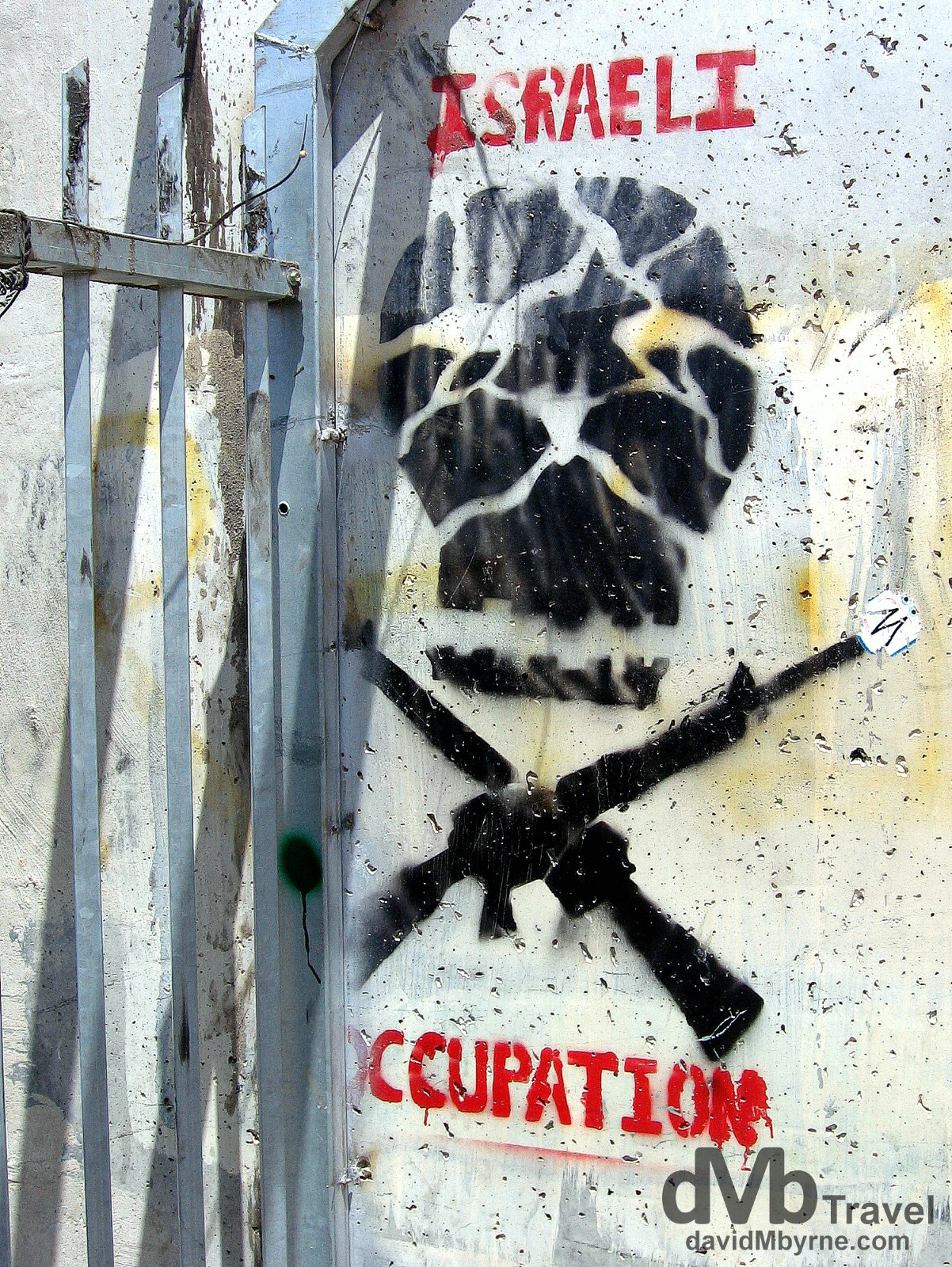
At the wall separating Israel from the Palestinian West Bank, Palestinian Territories. May 2, 2008.
– Then U.S. Senator Hillary Rodham Clinton commenting in 2005
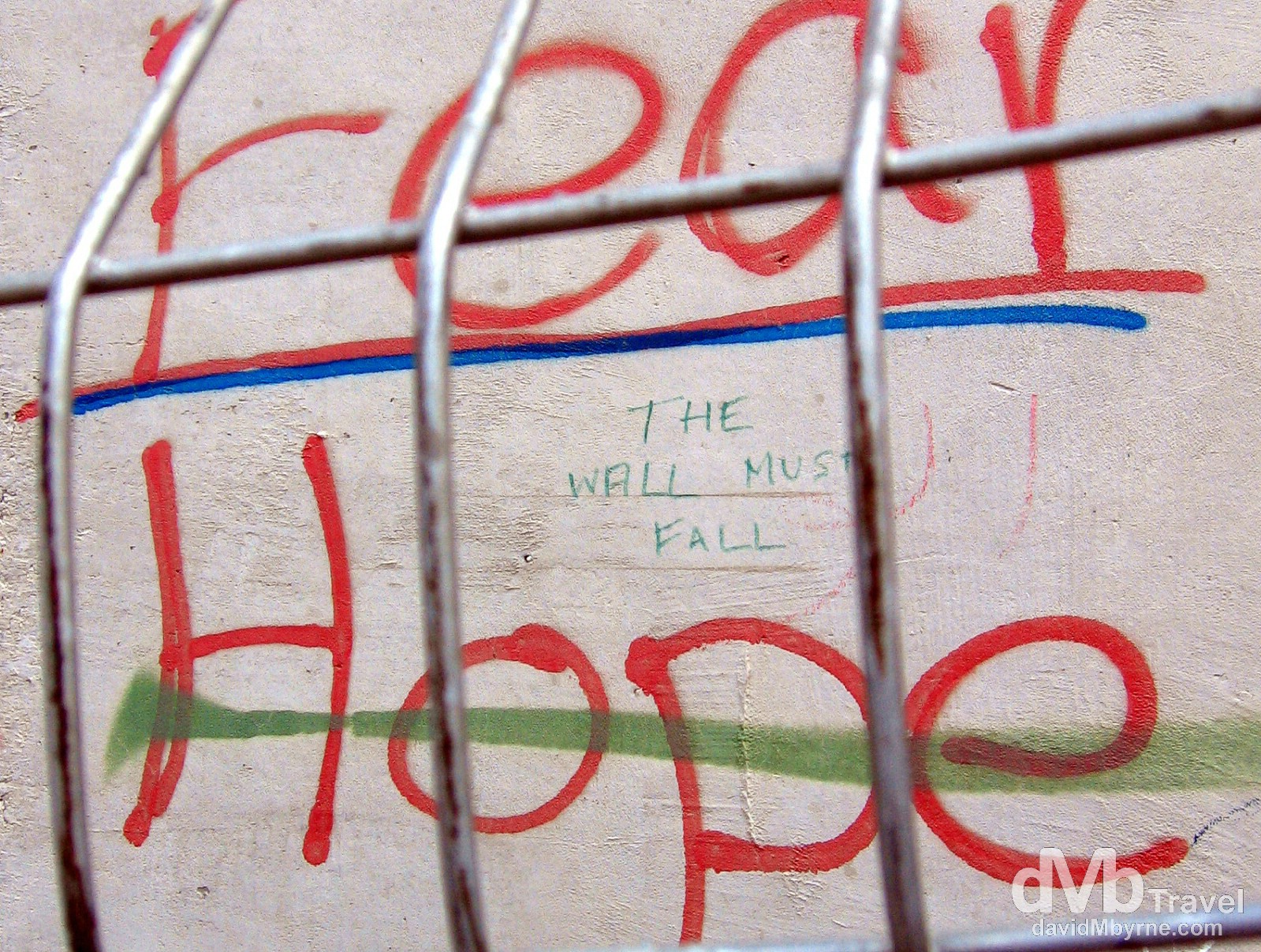
Fear. Hope. A section of the heavily guarded wall separating the Palestinian West Bank from Israel. May 2, 2008.
______________________________________________________________________
